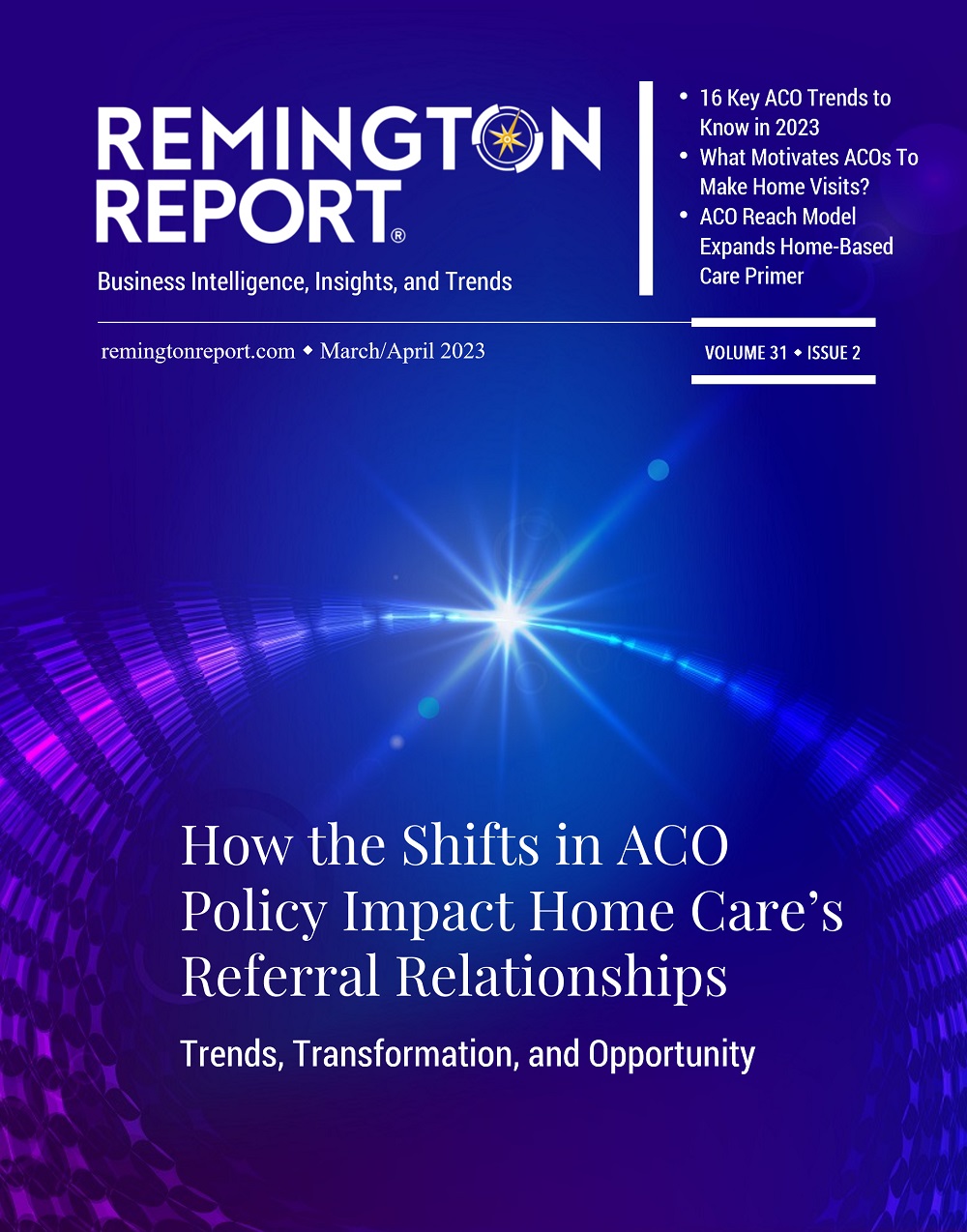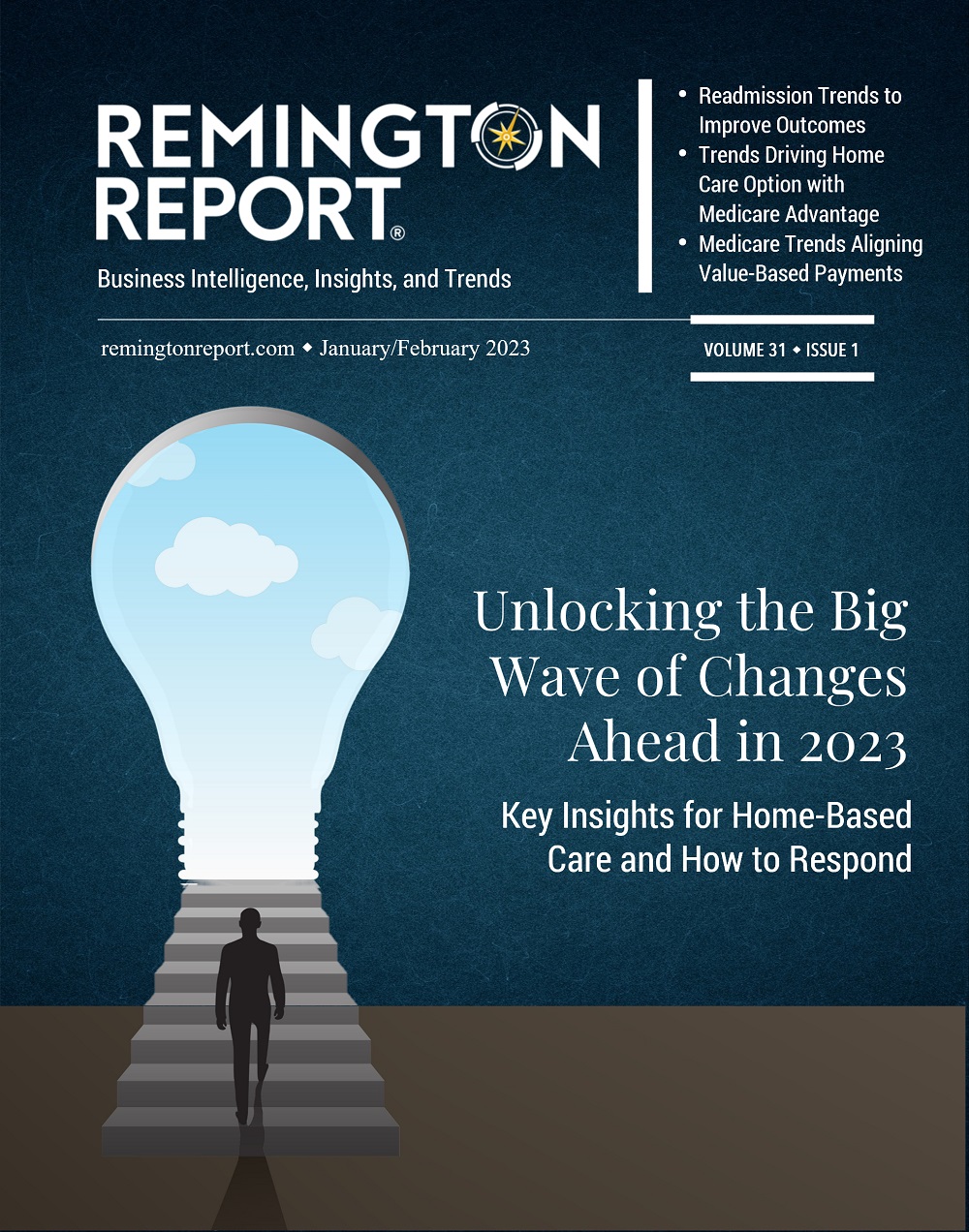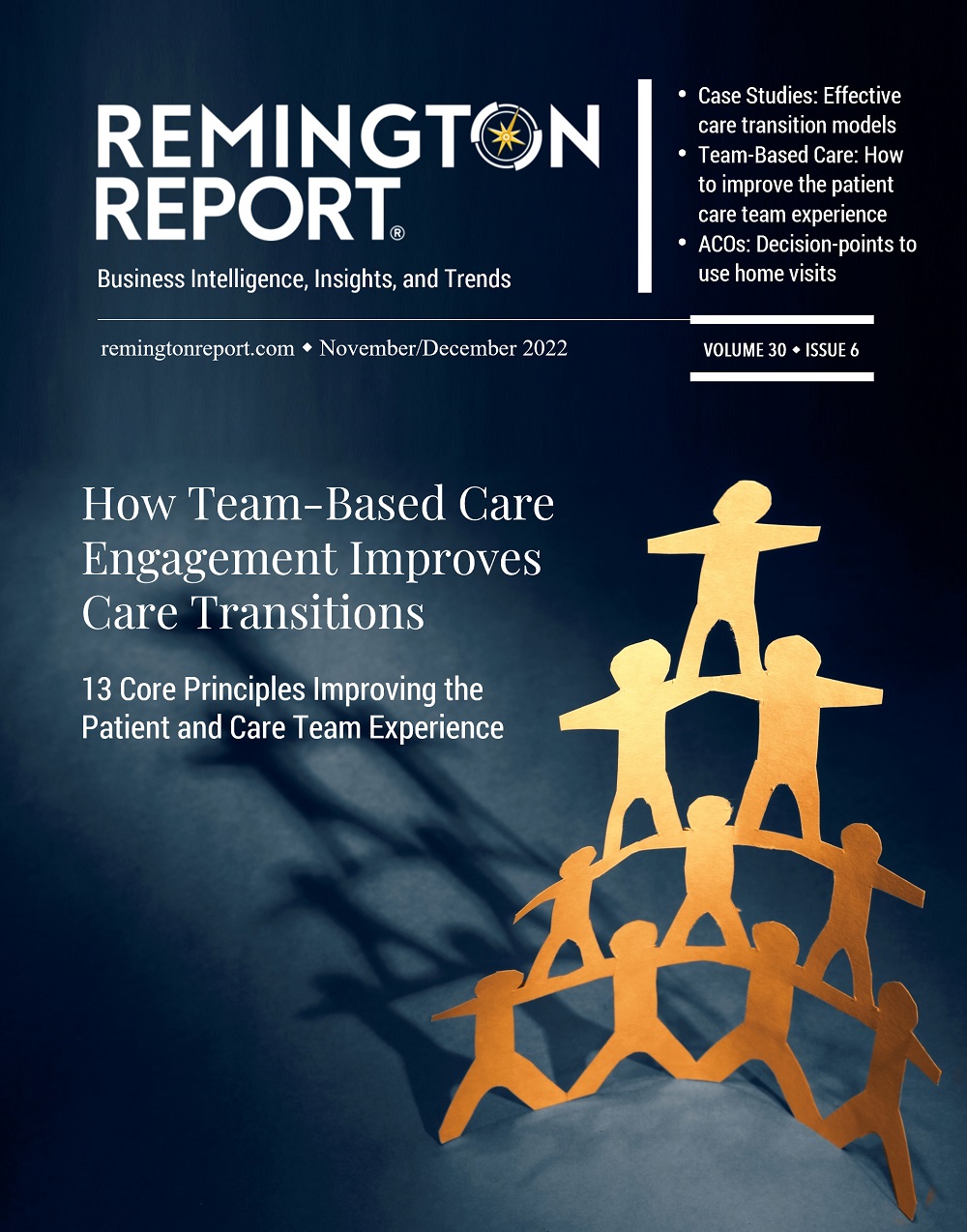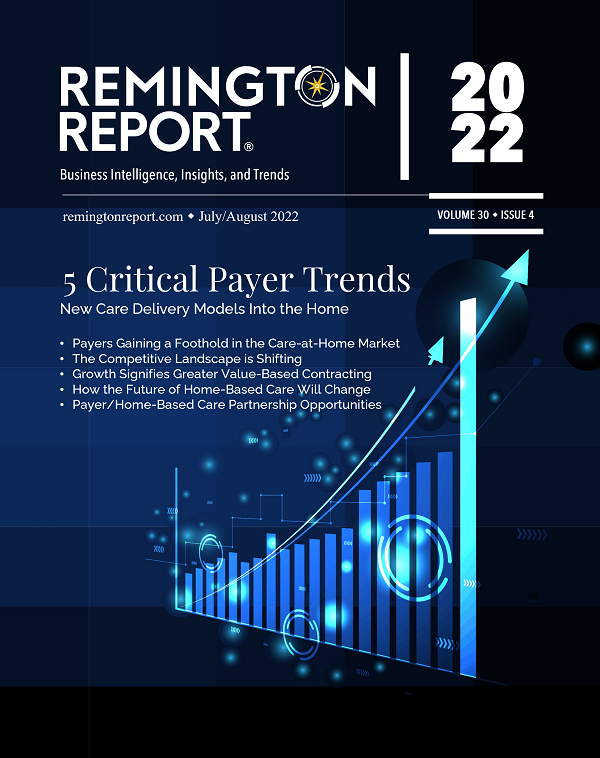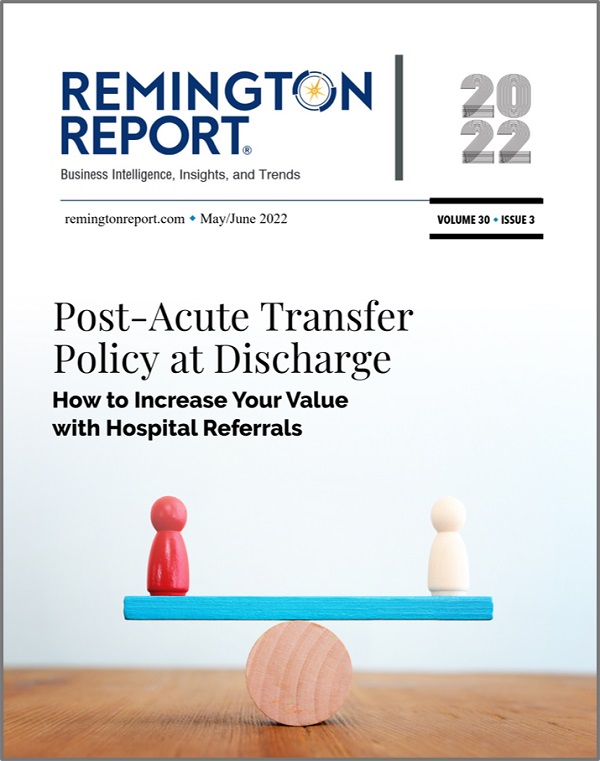INTERACTIVE FEATURES: When viewing this article on an electronic device, note that web addresses are live links. Just click the link to visit that web page.
Click for instructions for moving the PDF into Kindle, Nook, Apple iBooks, and Apple Library.
The future direction is care across the continuum. Engaging in value-based delivery in primary care, hospital, post-acute, home, and mental and behavioral health affords a deeper look at needs across the care continuum. For care at home providers, the goal is to create a post-acute continuum model as patients transition from one care setting to another whether that be in-home personal care services, skilled home health, palliative care, or hospice.
SEVERAL MARKET INDICATORS ARE PUSHING THE BOUNDARIES AWAY FROM THE SOLO PROVIDER
- Hospital mergers and acquisitions are moving local markets to regional and statewide.
- Telehealth advancements are erasing boundaries of where care can be delivered.
- There’s a greater need for seamless care from cradle to end-of-life.
The question for leadership is how do you want to position your organization? As an integrator? Or, as an aggregator?
An integrator puts partnerships front and center. The organization realizes that not all capabilities and services are best owned and operated by their organization. They are interested in bringing together an ecosystem of services to bring together solutions and outcomes that respond effectively to a rapidly evolving healthcare market.
An aggregator allows organizations to leverage their existing processes, people, technology, and information to stay ahead of the competition. In other words, the growth will be organically. Is time on your side as an aggregator?
The future for care at home providers will be continual mergers and acquisitions and partnerships with organizations that provide care in the home. Many organizations are firming-up their market position to include attention to a continuous service lines to include home health, palliative care, in-home care, and hospice.
Examples of integrators diversifying service lines and geographic footprint.
Baptist Health and BAYADA
Baptist Health, the largest health care provider in greater Jacksonville, has a joint venture with BAYADA Home Health Care to expand upon the services to help people with multiple chronic conditions as well as patients recovering from an illness, injury, or recent hospitalization.
LHC Group
Strategic positioning is offering a diversified service lines – home health, hospice, home and community-based services, and facility- based care in 35 states and the District of Columbia.
Amedisys and BrightStar
Amedisys combines home health and hospice with BrightStar Care to facilitate the coordination of care between Amedisys’ hospice and home health care centers.
AccentCare and Seasons Hospice and Palliative Care
AccentCare and Seasons Hospice & Palliative Care (Seasons) agreed to combine their organizations. AccentCare’s expertise in home health, personal care services (PCS), and hospice is complemented by Seasons’ leadership within the hospice and palliative care spaces. These strengths, along with an expanded geographic footprint, will enable the new combined organization to expand offerings in current and additional markets.
Strategic market positioning in 2021 will be critical. Market signals indicate it will get harder to remain as a “solo” provider. Companies like Amedisys, AccentCare, and LHC Group are diversifying service lines and expanding their geographic footprint. Responding to new market transformation, these companies are developing multi-service lines to deliver a post-acute continuum of care model. This creates the ability to transition patients to different levels of care in a post-acute network. Payers are seeking the convenience of one-stop resources for contracting. Not a national company? Consider forming strategic partnerships to create similar post-acute continuum models.

Lisa Remington is widely recognized as one of the foremost futurists in the home care industry, focusing on healthcare trends and disruptive innovation. She serves as the president and publisher of the Remington Report magazine and is also the President of Remington’s Think Tank Strategy Institute. Lisa provides strategic advice and education to over 10,000 organizations, assisting them in developing transformative strategies for growth and their future implications. She closely monitors complex trends and forces of change to develop effective strategic approaches.



